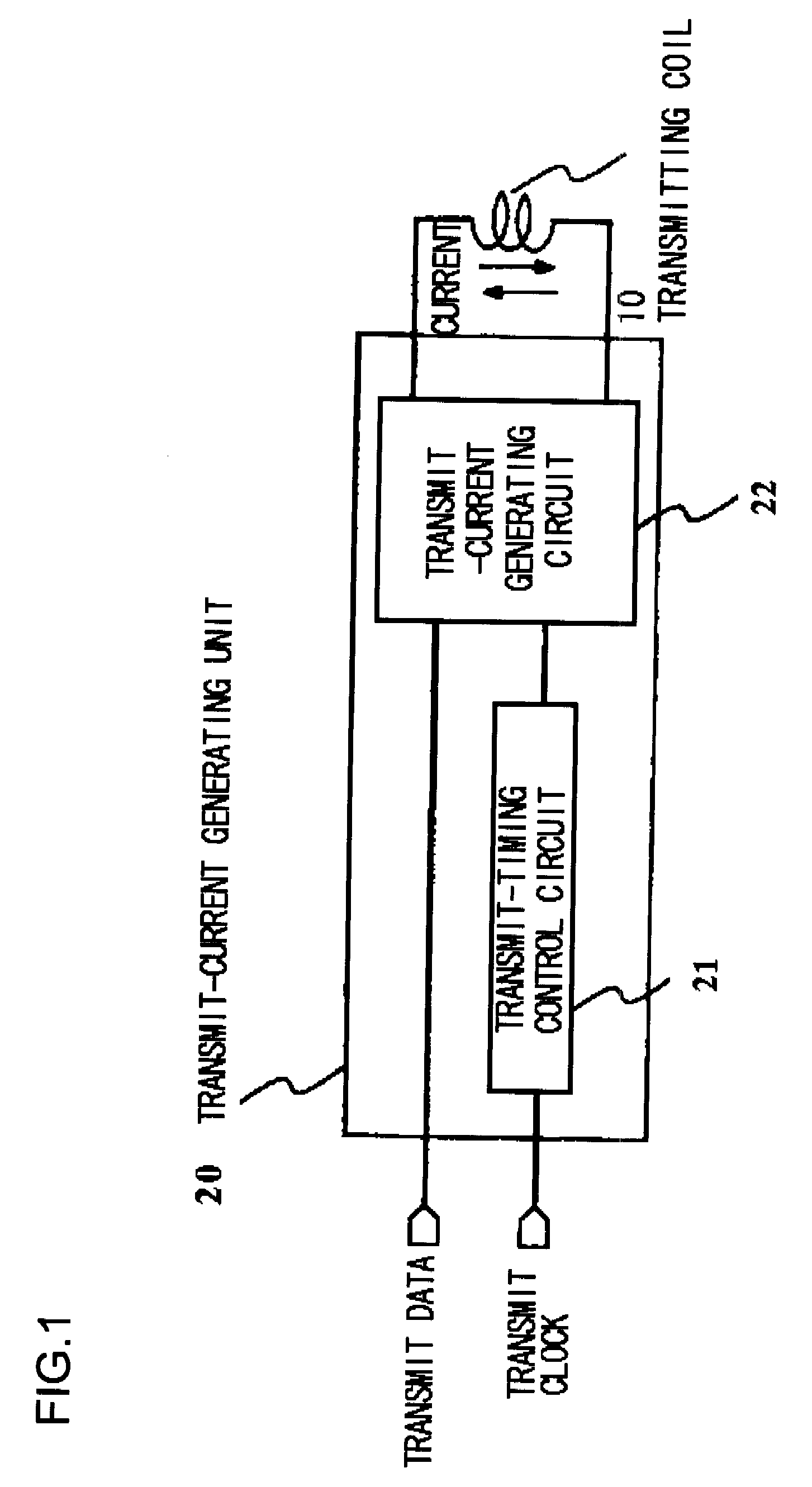Signal transmission system and semiconductor integrated circuit device
a transmission system and integrated circuit technology, applied in the direction of near-field systems using receivers, semiconductor/solid-state device details, pulse techniques, etc., can solve the problems of reducing the number of wires, the inability to stack semiconductor chips of the same shape, and the microfabrication of transistor elements approaching its limit, etc., to achieve thin semiconductor substrates, increase power consumption, and a large coil size
- Summary
- Abstract
- Description
- Claims
- Application Information
AI Technical Summary
Benefits of technology
Problems solved by technology
Method used
Image
Examples
Embodiment Construction
[0095]Next, the present invention will be described with reference to the drawings.
[0096]FIG. 1 is a block diagram illustrating an example of the configuration of a transmitting circuit used by a signal transmission system according to the present invention.
[0097]As illustrated in FIG. 1, the transmitting circuit used by the signal transmission system of the present invention includes a transmitting coil 10 and a transmit-current generating unit 20 for supplying a current through the transmitting coil 10 at every rising edge or falling edge of a clock used in transmission of data. Transmit data and a clock (transmit clock) used in data transmission are supplied to the transmit-current generating unit 20.
[0098]The transmit-current generating unit 20 has the transmit-timing control circuit 21 and the transmit-current generating circuit 22. The transmit-timing control circuit 21 generates a timing signal that decides the timing at which current is passed through the transmitting coil 1...
PUM
 Login to View More
Login to View More Abstract
Description
Claims
Application Information
 Login to View More
Login to View More - R&D
- Intellectual Property
- Life Sciences
- Materials
- Tech Scout
- Unparalleled Data Quality
- Higher Quality Content
- 60% Fewer Hallucinations
Browse by: Latest US Patents, China's latest patents, Technical Efficacy Thesaurus, Application Domain, Technology Topic, Popular Technical Reports.
© 2025 PatSnap. All rights reserved.Legal|Privacy policy|Modern Slavery Act Transparency Statement|Sitemap|About US| Contact US: help@patsnap.com



